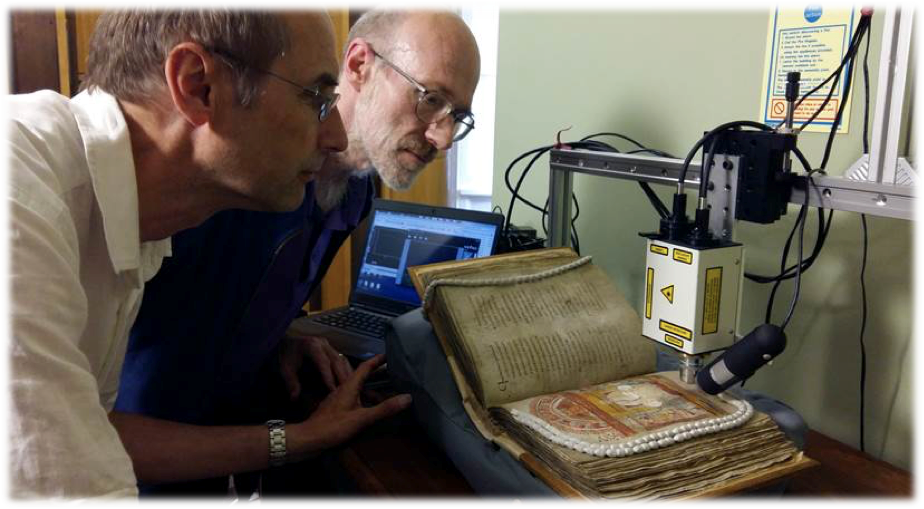Uncovering the secrets of medieval manuscripts
Through the generosity of donors, academics at Durham have been able to form an interdisciplinary collaboration to carry out the first-ever large-scale scientific survey of British medieval illuminators' pigments.

Team Pigment brings together expertise in History (Professor Richard Gameson) and Chemistry (Professor Andrew Beeby), to unlock the secrets of medieval manuscripts which, until now, were only known to their original creators.
The non-invasive, non-destructive chemical analysis of pigments is achieved by shining light at the pigments and measuring the reflected light using Raman and reflectance spectroscopies and hyperspectral imaging.
This information is then integrated with the historic understanding of books to transform our understanding of these manuscripts’ significance as indicators of cultural exchange and societal change. The discovery that Lapis Lazuli from Afghanistan was used by illuminators in Durham c.1100 is one example.
Donor support was the catalyst for this project as donor Robert Shepherd (Grey College, Chemistry, 1962-65) describes: “The idea behind Team Pigment came from a tentative conversation followed by an interdepartmental introduction which was immediately seized and run with. We backed this up with an initial modest donation and regular top ups, which were leveraged into something far larger”.
Team Pigment have overcome logistical difficulties which had previously prevented this type of research by developing innovative equipment which can be packed into a suitcase for transportation and set up within an hour at any library housing rare manuscripts.
The huge potential of this research to unlock the secrets of historic artefacts combined with innovative technology mean that Team Pigment have been able to undertake the most comprehensive investigation of this type to date.
'We have watched with delight and admiration as the project grew over ten years into something way larger and more important than we believed possible (with far more serious funding). We have found it immensely rewarding and the collaboration between chemistry and history inspiring.' Robert (Grey College, Chemistry, 1962-65) and Felicity Shepherd.


/prod01/prodbucket01/media/durham-university/alumni-/page-header-banners/Thank-you-banner.png)